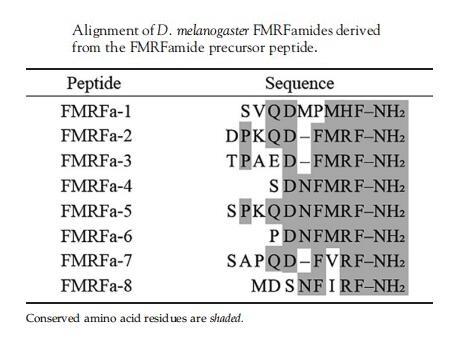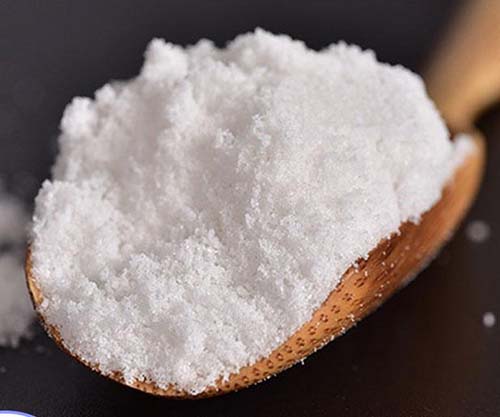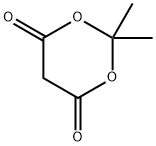Synthesis methods of 2,2-Dimethyl-1,3-dioxane-4,6-dione
Jun 14,2022
Introduction
2,2-Dimethyl-4,6-dioxo-l,3-dioxane (I), or Meldrum's acid, is a common intermediate product in organic synthesis and an extremely promising synthone, which has been used to obtain a great variety of heterocyclic compounds, including biologically active substances. The most convenient method of synthesizing compound I is by reacting malonic acid (II) with acetone and acetic anhydride in the presence of catalytic quantities of cone. sulfuric acid[1].
The method of synthesizing
In the current report we attempt to study in detail the principal stages of the process, from the synthesis of the starting acid II to its cyclization into Meldnnn's acid, with a view to establishing a production technique that would be viable on an industrial scale. Of the numerous malonic acid synthesis methods only those based on the hydrolysis of malonic acid diethyl ester (III) are acceptable in this respect. Acid hydrolysis is distinctly more viable, since in alkaline processing, malonic acid salts are formed which, because of the acid's high water-solubility, are not readily converted into II on an industrial scale (separation of II from inorganic salts is extremely difficult)[1].
The separation of malonic acid
In the past, hydrochloric acid was used predominantly to saponify the ester groups of compound III, with sulfuric acid being employed less frequently. The use of either acid is fraught with considerable technological difficulties. For example, aqueous hydrochloric acid (when heated) causes substantial apparatus corrosion, which is very difficult to avoid as it has to be distilled off at the end of the saponification process. Apart from its corrosive effects a major obstacle when using sulfuric acid is the separation of malonic acid from the bottom (comprising a suspension of II in concentrated sulfuric acid) left over after evaporation of water[2].
Synthesis methods
We were able to overcome all these technological problems by using orthophosphoric acid to saponify the ester groups of compound III. Firstly, it is well-known that normal stainless steels resist the action of orthophosphoric acid solutions over a much wider range of temperature and concentration than they do for hydrochloric or sulfuric acids [1]. Secondly, we found that orthophosphoric acid was readily soluble in malonic ester III, while malonie acid did not dissolve in III, and could be easily filtered off. Because of the properties of acid II and ester III outlined above, we were able to create an almost waste-free, environmentally clean method of synthesizing II based on the saponification of malonic ester in the presence of H3PO 4. It was found that when III had been heated in aqueous H3PO4, then the water had been evaporated off, the mass had been diluted with ester III, and malonic acid had been filtered off, the mother liquor could be recycled after dilution with water. After six cycles of the operation, the mother liquor is decolorized with carbon and reused in the hydrolysis process. By distilling off and regenerating ethyl alcohol formed at the saponification stage, substantial losses are eliminated and the disposal of waste waters avoided (see Experimental). The cyclic process for synthesizing acid II is shown in schematic form below.
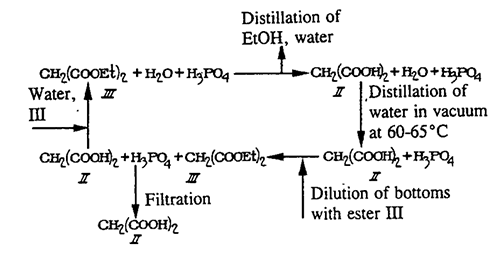
Synthesis applications of this compound
The development of simple synthetic routes for widely used organic compounds from readily available reagents is one of the major tasks in organic synthesis. Due to its high acidity and tendency to regenerate acetone, Meldrum’s acid (2,2-dimethyl-1,3-dioxane-4,6-dione), appears to be an attractive reagent in organic synthesis. However, synthesis applications of this compound have received little attention except as an alternative for cyclic malonic esters. Useful applications of alkylidene derivatives of Meldrum’s acid as dienophiles in Diels Alder reactions and Michael acceptors have been reported, showing advantages of these systems over their acyclic analogues. Alkylidene Meldrum’s acids are readily accessible from Meldrum’s acid and carbonyl compounds (ketones and aldehydes) in a relatively large scale[2].
Reference
1 Zhou Y, Qian L, Liu M, et al. 5-(2, 6-Bis ((E)-4-(dimethylamino) styryl)-1-ethylpyridin-4 (1 H)-ylidene)-2, 2-dimethyl-1, 3-dioxane-4, 6-dione: Aggregation-Induced Emission, Polymorphism, Mechanochromism, and Thermochromism[J]. Journal of Materials Chemistry C, 2017, 5(36): 9264-9272.
2 Tóth G, Kövér K E. Simple, safe, large scale synthesis of 5-arylmethyl-2, 2-dimethyl-1, 3-dioxane-4, 6-diones and 3-arylpropanoic acids[J]. Synthetic communications, 1995, 25(19): 3067-3074.
- Related articles
- Related Qustion
- 2,2-Dimethyl-1,3-dioxane-4,6-dione: History and Versatility in Organic Synthesis Sep 25, 2024
Meldrum's acid, synthesized by Meldrum in the early 20th century, is crucial for organic synthesis, notably in multicomponent reactions and heterocycle formation.
- Application and toxicological of 2,2-Dimethyl-1,3-dioxane-4,6-dione Apr 12, 2022
Meldrum’s acid (2,2-dimethyl-1,3-dioxane-4,6-dione; isopro-pylidene malonate) is an organic compound, discovered in 1908 by A. N. Meldrum.1 Meldrum misidentified the structure as b-lactone with carboxylic acid group at position, and the cor
- Uses and Synthesis of Meldrum’s acid Mar 22, 2022
Meldrum’s acid has attracted considerable attention due to its high acidity (pKa = 4.97) and rigid cyclic structure. Acylated derivatives (synthetic equivalents of mixed ketenes) readily undergo alcoholysis to give b-keto esters. Alkylidene
?FMRFamide (FMRFa) was originally isolated as a cardioacceleratory peptide from mollusks. To date, a number of biologically active FMRFas and their related peptides have been identified.....
Jun 13,2022Biochemical EngineeringThiamine hydrochloride is the hydrochloride of thiamine, also known as thiamine. It is the earliest water-soluble vitamin purified by people.....
Jun 14,2022API2,2-Dimethyl-1,3-dioxane-4,6-dione
2033-24-1You may like
- The Duality of Sanguinarine: Anticancer Potential, Carcinogenic Controversy and Clinical Outlook
Apr 1, 2025
- Acid Red 18: Applications in Dyeing, Pollution Issues, and Treatment Approaches
Apr 1, 2025
- DL-methionine methylsulfonium chloride: Effects on Gastric Conditions and Adipocyte Differentiation
Apr 1, 2025
2,2-Dimethyl-1,3-dioxane-4,6-dione manufacturers
- 2,2-Dimethyl-1,3-dioxane-4,6-dione
-

- $1000.00 / 1kg
- 2025-04-01
- CAS:2033-24-1
- Min. Order: 1kg
- Purity: 99%
- Supply Ability: 5000
- 2,2-Dimethyl-1,3-dioxane-4,6-dione
-

- $10.00 / 1KG
- 2025-03-31
- CAS:2033-24-1
- Min. Order: 1KG
- Purity: 99%
- Supply Ability: 5tons
- 2,2-Dimethyl-1,3-dioxane-4,6-dione
-
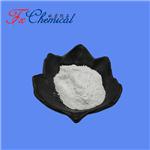
- $0.00 / 25KG
- 2025-03-29
- CAS:2033-24-1
- Min. Order: 25KG
- Purity: 98%min
- Supply Ability: 30tons/month




